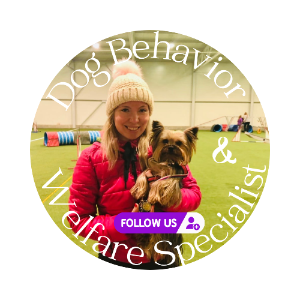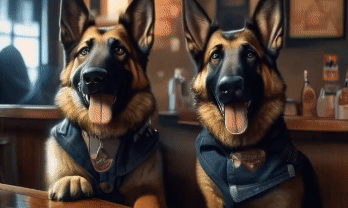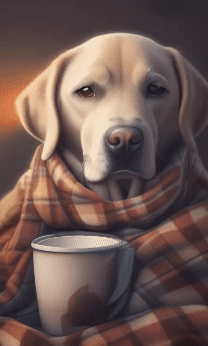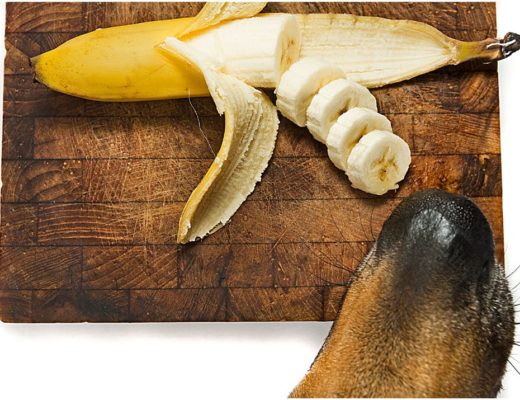As a dog behaviorist and welfare trainer, I often encounter dog owners who are concerned about their dog’s well-being and happiness.
One of the most fundamental aspects of ensuring your dog’s welfare is to provide them with the 1st Freedom from Hunger and Thirst. This means that your dog should always have access to clean water and a balanced diet that suits their age, breed, and health condition.
In this blog post, I will explain why this freedom is so important, how to meet your dog’s nutritional needs, and what signs to look for if your dog is not getting enough food or water.

Why is the 1st Freedom from Hunger and Thirst important?
The 1st Freedom from Hunger and Thirst is one of the internationally recognized Five Freedoms that spell out humane treatment of animals. These standards were developed by Britain’s Farm Animal Welfare Council in 1965 and adapted by the Association of Shelter Veterinarians for companion animals in shelters.
The Five Freedoms ensure that we meet the mental and physical needs of animals in our care and provide them with a positive experience.

The 1st Freedom from Hunger and Thirst is essential for your dog’s health and well-being, as it affects their growth, development, immunity, energy, and mood.
Without adequate food and water, your dog can suffer from dehydration, malnutrition, weight loss or gain, dental issues, skin problems, lethargy, weakness, and even organ failure.
Moreover, hunger and thirst can cause your dog to experience stress, anxiety, frustration, and aggression, which can lead to behavioral problems and affect your relationship with your dog.
How to meet your dog’s nutritional needs?

To provide your dog with the 1st Freedom from Hunger and Thirst, you need to consider several factors, such as your dog’s age, breed, size, activity level, and health status. These factors determine how much food and water your dog needs, what type of food is best for them, and how often you should feed them.
Here are some general guidelines to follow:
? Provide your dog with fresh, clean water at all times
Change the water at least twice a day and make sure the water bowl is clean and accessible. If your dog is outside, ensure that the water bowl is not frozen or tipped over. You can also add some ice cubes or frozen treats to the water to keep it cool and encourage your dog to drink more.
? Feed your dog a high-quality, complete, and balanced diet that meets their nutritional requirements
Choose a dog food that is appropriate for your dog’s life stage, breed, and health condition. Avoid cheap or low-quality dog foods. You can also consult your veterinarian or a canine nutritionist for advice on the best diet for your dog.
? Follow the feeding instructions on the dog food label or your veterinarian’s recommendation
Adjust the amount of food according to your dog’s weight, activity level, and appetite. Do not overfeed or underfeed your dog, as this can cause health problems and obesity. You can use a measuring cup or a scale to measure the exact amount of food for your dog.
? Feed your dog on a regular schedule, preferably twice a day, at the same time and place
Do not leave the food in the bowl for more than 10 minutes, as this can spoil the food and encourage picky eating. If your dog does not finish the food, remove the bowl and offer it again at the next mealtime. Do not free-feed your dog, as this can make it hard to monitor their food intake and appetite.
? Avoid giving your dog human food that can be harmful to them
Such as chocolate, grapes, onions, garlic, xylitol, alcohol, caffeine, or bones. These foods can cause toxicity, choking, or digestive problems for your dog. Instead, you can offer your dog healthy treats, such as fruits, vegetables, lean meats, or cheese, in moderation and as part of their daily calorie intake. You can also use treats as rewards for training or enrichment activities for your dog.
@8pawsclub What if I told you that you are feeding your dog wrong? Don’t worry, it’s not your fault. There is so much misinformation and marketing hype out there that it’s hard to know what is best for your dog. ➡️ www.nutrition.8paws.club That’s why I created this online course on Dog Nutrition, where I will teach you everything you need to know about your dog’s diet. You will learn how to avoid overfeeding, allergies, senior food, probiotics, and other common pitfalls. You will also learn how to fulfill your dog’s first freedom: freedom from hunger and thirst. This course will save you money and improve your dog’s life. Don’t miss this chance and sign up today with a special discount! ➡️ www.nutrition.8paws.club ⬅️ use 10% discount code DOGNUT10 #dognutrition #dognutritionist #dognutritiontips #dognutritionblogger #dognutritionists ♬ original sound – 5 Freedoms*Dog Welfare Science
What signs to look for if your dog is not getting enough food or water?
It is important to monitor your dog’s food and water intake, as well as their weight, body condition, coat, skin, energy, and mood. These indicators can help you determine if your dog is getting enough food and water or if they are suffering from hunger or thirst.
Some signs that your dog is not getting enough food or water are:
? Weight loss or gain
You should weigh your dog regularly and check their body condition score. Your dog should have a visible waist and a slight tuck in the abdomen. You should be able to feel their ribs, spine, and hip bones, but not see them.
If your dog is losing or gaining weight rapidly or without any reason, you should consult your veterinarian and adjust their diet accordingly.
? Dull coat or skin problems
Your dog’s coat and skin reflect their nutritional status. Your dog should have a shiny, smooth, and soft coat, and a healthy, elastic, and hydrated skin.
If your dog has a dull, dry, or brittle coat, or a flaky, red, or irritated skin, they may be lacking essential nutrients, such as protein, fat, vitamins, or minerals. You should check your dog’s diet and supplement it with omega-3 fatty acids, biotin, or zinc, if needed.
? Lethargy or weakness
Your dog’s energy level and activity depend on their food and water intake. Your dog should be alert, playful, and responsive, and have a normal appetite and thirst. If your dog is lethargic, weak, or uninterested in their surroundings, they may be dehydrated or malnourished.
You should offer your dog more food and water and check their hydration status by pinching their skin. If the skin does not snap back quickly, your dog is dehydrated and needs immediate veterinary attention.
? Dehydration or excessive thirst
Your dog’s water intake and output are influenced by their food, environment, and health. Your dog should drink enough water to maintain their hydration and produce clear or pale yellow urine.
If your dog is dehydrated, they may have dry mouth, sunken eyes, or loss of skin elasticity. If your dog is excessively thirsty, they may have increased urine output, dilute urine, or signs of urinary tract infection. These symptoms can indicate underlying health issues, such as kidney disease, diabetes, or hormonal disorders. You should take your dog to the veterinarian and have them tested for any possible causes of dehydration or excessive thirst.
Conclusion
The 1st Freedom from Hunger and Thirst is a vital aspect of your dog’s welfare and happiness. By providing your dog with clean water and a balanced diet, you can ensure their health, well-being, and quality of life.
You can also prevent or treat many behavioral problems that stem from hunger or thirst, such as resource guarding, begging, or scavenging. By following the guidelines and tips in this blog post, you can meet your dog’s nutritional needs and give them the best care possible.
I hope you found this blog post helpful and informative. If you have any questions or comments, please feel free to leave them below. I would love to hear from you and your dog!

Dog’s 5 Freedoms Framework: 1st FREEDOM FROM HUNGER & THIRST | Dog Nutrition Online Courses
Unlock the secrets to optimal dog nutrition now! Enroll in our exclusive online courses and provide your beloved canine companion with a happy, healthy, and long life.





